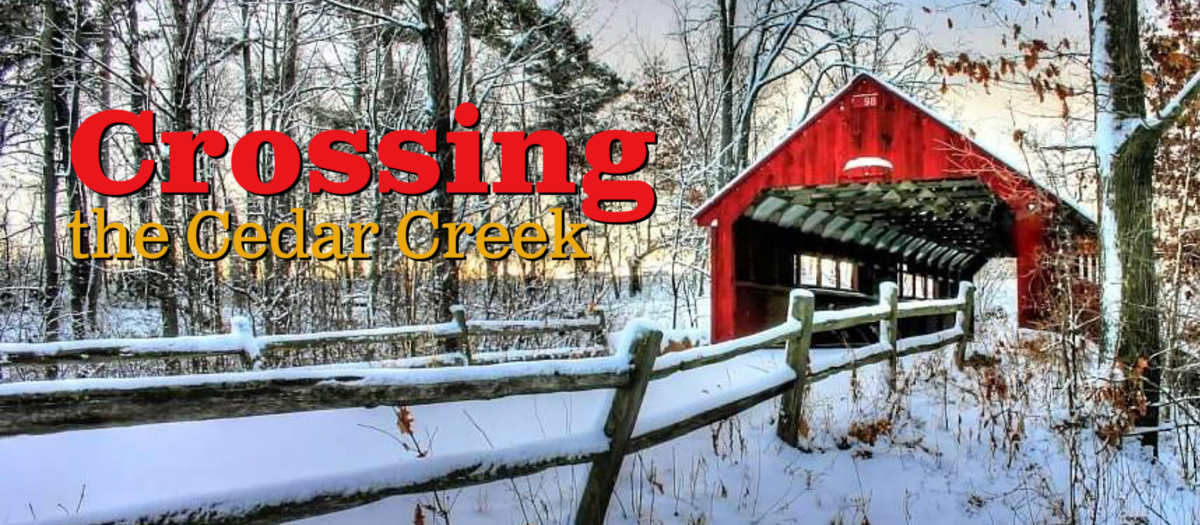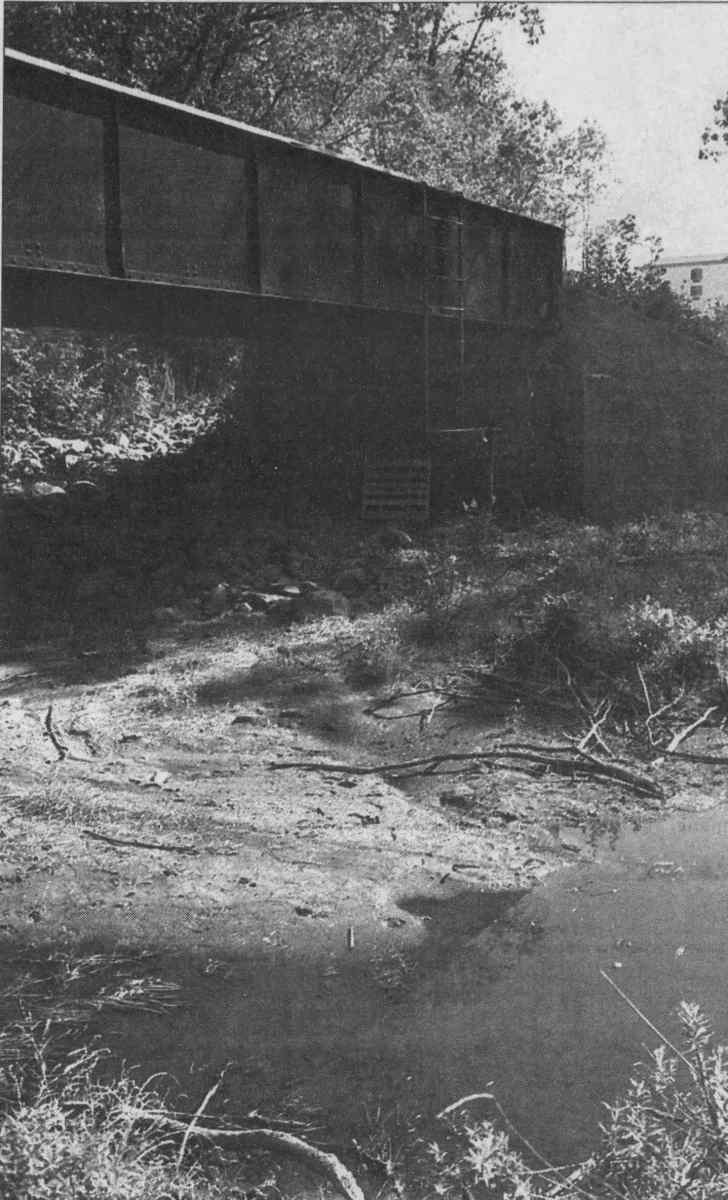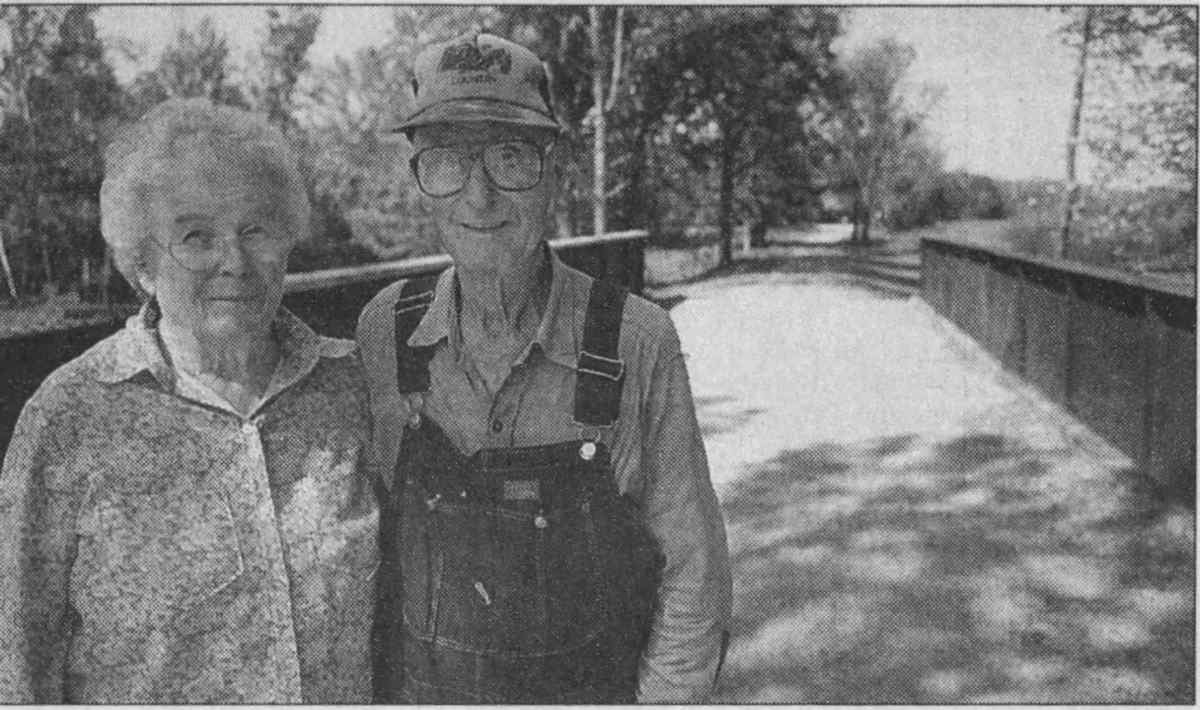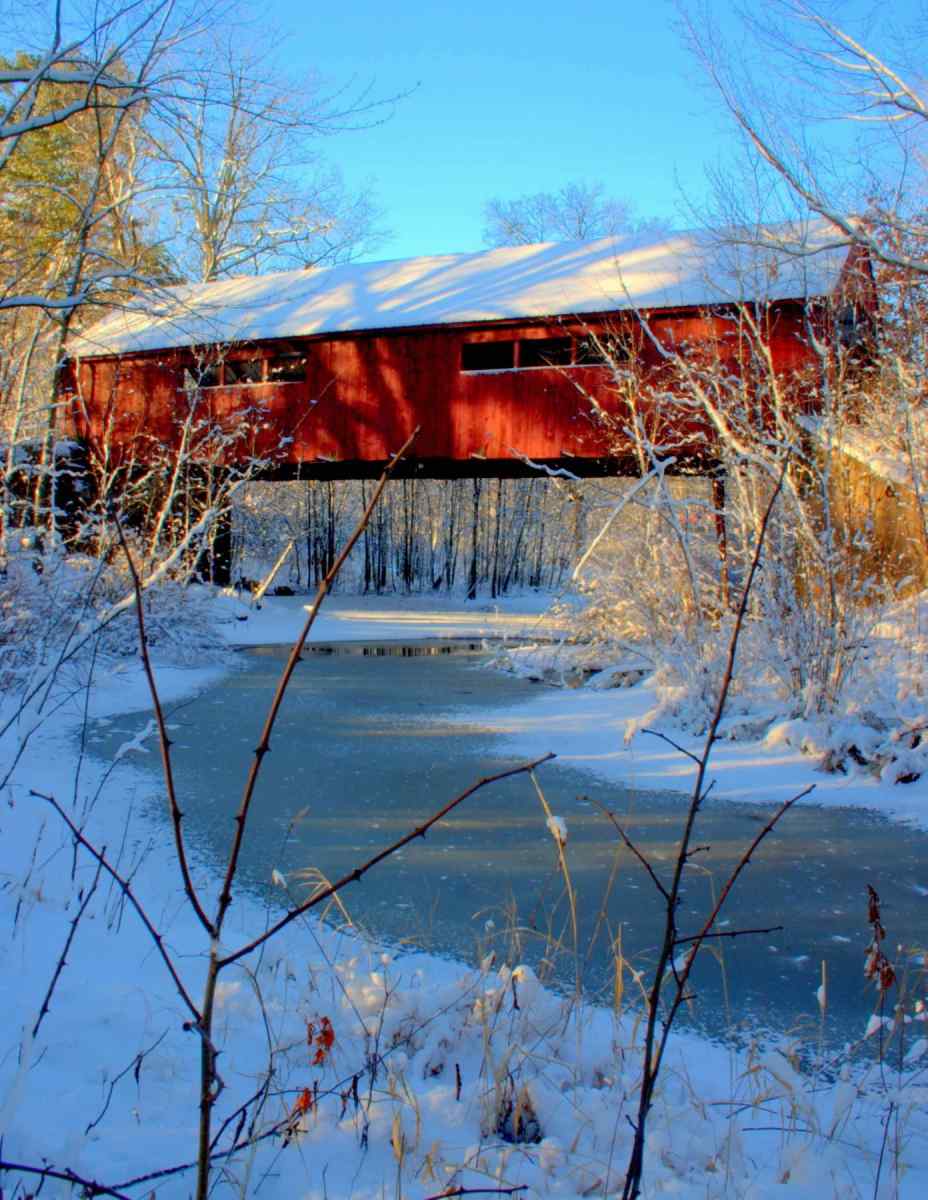Rothschild Covered Bridge

Hidden in Plain Sight
The covered bridge over Cedar Creek in Rothschild is not as it seems. Underneath the rustic wooden sheathing sits an ancient steel road bridge which, though plain in form, has quite the story to tell. The Cedar Creek Walking Trail closely follows the route of Old State Highway 10, a modest gravel road that roughly paralleled Modern U.S. Route 51 from Beloit in the south to Hurley, continuing along the present route of U.S. Route 2 to its northern terminus in Superior. In 1912, a small through girder bridge was erected at Rothschild to carry the highway across Cedar Creek. At a minuscule 16 feet wide it would have looked far more at home on a quiet country lane than a highway. Even with the smaller vehicles of the time the bridge too small to safely handle two way traffic, and travelers headed in opposite directions had to take turns crossing or risk a possible collision.

One of the few extant images of the Highway 10 Bridge before its conversion.
Credit: Wausau Daily Herald 1998
Too Little Too Late... Literally
The Bridge was likely inadequate even before it was completed. Built with horse and wagon traffic in mind during a time when automobiles and heavy equipment were becoming more and more common; it was only a matter of time before an accident occurred. In October of 1913, less than a year after the bridge was completed, a county steamroller on its way up from Kronenwetter to the village of Flieth (Rib Mountain) attempted to cross Cedar Creek. At over ten tons the enormous roller was far more than the bridge could handle. About halfway across the deck gave way sending the roller and its hapless crew plunging twelve feet into the water below. The men were somehow unharmed by this misadventure but the same could not be said for their roller which was now firmly wedged nose down in the muddy creek bottom.1 It took over two weeks to extract the roller and put the bridge back together.2

Siblings David and Esther Clark pose on the old Highway 10 Bridge near their lifelong home in Rothschild
Credit: Wausau Daily Herald 1998
Perhaps the roller incident should have been taken as a sign of things to come as the bridge became notorious for the nasty accidents it caused. Siblings David and Esther Clark lived their entire lives in a house just a few yards from the bridge and became something of amateur historians as they recorded the numerous misadventures that took place on its sixty-foot span. “It scared me…” Said David, in a 1998 interview. “They used to smash them up on the bridge. I remember once I came into the kitchen and there was a lady picking her teeth out and putting them in the basin.”3 His sister recalled an incident when a bus and a loaded farm wagon attempted to cross at the same time. “It must have been pretty darn close” She said. The pair also remembered their father occasionally being called upon to drag wrecks out of the creek with the family’s team. At the time of the interview the bridge still clearly bore the scars of the numerous wrecks it had caused over the fourteen years that it served Highway 10.4
From Highway to Parkway
In 1927 State Highway 10 was realigned and re-designated as Federal Highway 51.5 Understandably, the engineers in charge of the project decided to bypass the old Cedar Creek Bridge in favor of a new, wider, and stronger span. A portion of the old right-of-way, including the Cedar Creek Bridge, was gifted to the Clark Family who continued to use and maintain it as a driveway on their farm. Time passed and what had been farmland became Rothschild’s business and industrial center. In the 1990s the Clarks decided to sell off a portion of their property, including the bridge, to the Creske Corporation. CEO Bill Creske had the land transformed into a walking trail for public use and it became a popular way for pedestrians to reach the Cedar Creek Mall. The Bridge, however, was becoming an eyesore; years of decay and vandalism had begun to detract from the otherwise picturesque surroundings. Mr. Creske decided this would simply not do, so began a pet project to beautify the old bridge. “I’ve got about 30 books here on my desk with bridges and every day I change my idea.” He said in a 1998 interview with the Wausau Daily Herald.6 Eventually, Mr. Creske would settle upon a classic covered bridge design, painted traditional red. Creske hoped that the makeover, along with upgraded lighting would deter future vandals and turn the bridge into a local photo op. The new, “old” covered bridge was erected that year. To the casual cyclist or pedestrian passing down the trail, the bridge may not even elicit a second thought but if they were to pause a moment and look past the manufactured New England Charm, they would still be able to find the old Highway 10 Bridge still bearing the scars of its turbulent past.

The Bridge's steel superstructure can still be seen today underneath the wooden facade.
Image Credit: Tom Mortenson

Despite the steel beams hidden inside, from the exterior the bridge could easily pass as an authentic covered bridge.
Image Credit: Tom Mortenson
< Previous Story Glossary Main Index Next Story >
1. "Through Bridge." Wausau Daily Herald (Wausau), October 4, 1913.
2. "Replaced." Wausau Daily Herald (Wausau), October 22, 1913.
3. "Rothschild Business Owner Tries to Bridge past, Future." Wausau Daily Herald (Wausau), September 12, 1998.
4. "Rothschild Business Owner Tries to Bridge past, Future"
5. Wausau Daily Herald (Wausau), May 12, 1927.
6. "Rothschild Business Owner Tries to Bridge past, Future." Wausau Daily Herald (Wausau), September 12, 1998.
